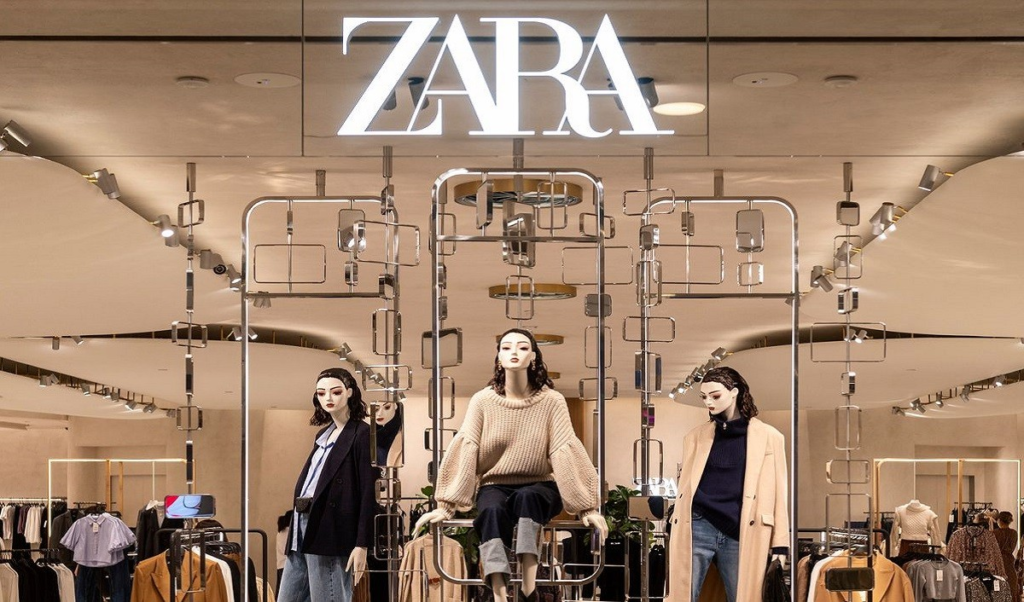In the ever-evolving landscape of fashion retail, few brands have achieved the level of global recognition and success as Zara. This Spanish fast-fashion juggernaut has defied conventions, disrupted the industry, and emerged as a trailblazer, captivating consumers worldwide with its unique blend of style, affordability, and lightning-fast turnaround times. As we delve into the fascinating world of Zara, we unravel the secrets that have propelled this company to the pinnacle of retail excellence, leaving an indelible mark on the fashion industry.

Zara: Company Highlights
| Category | Information |
| Industry | Retail |
| Founded | 1975; 49 years ago (as Zorba) in Spain |
| Founders | Amancio Ortega, Rosalía Mera |
| Headquarters | Arteixo, Galicia, Spain |
| Number of locations | 2,007 stores[1] |
| Area served | Worldwide |
| Products | Clothing |
| Revenue | €19.586 billion (2021) |
| Parent | Inditex |
| Website | zara.com |
Zara: Overview
The story of Zara’s meteoric rise can be traced back to the humble beginnings of its founder, Amancio Ortega. In 1975, Ortega opened his first store in the city of A Coruña, Galicia, Spain, initially named “Zorba” after the classic film “Zorba the Greek.” However, upon learning of a nearby bar with the same name, he rearranged the letters to create the now-iconic brand, “Zara.”
Back in the beginning, Zara started by selling clothes that looked like expensive ones but cost less. Ortega, the founder, didn’t know it then, but this small start would change how people think about and buy clothes.
In the 1980s, Ortega saw that things needed to change to keep up with the times. He noticed that traditional fashion often took too long, with new styles becoming old before they even hit the stores. So, he came up with a new idea called “instant fashion.”
Ortega changed how clothes were designed, made, and sold. He used new technology and quick teams of designers. This made it possible for Zara to turn new fashion trends into clothes and get them into stores in just a few weeks, something no one else was doing at the time.
Excited about its new advantage, Zara decided to expand globally. It opened its first store outside Spain in Porto, Portugal, in 1985. After that, it kept on opening new stores in different countries. By the 1990s, Zara had become well-known in Europe, the United States, and Mexico. People who liked fashion were drawn to Zara because it offered something unique.
Zara didn’t just succeed because of its smart business plan. It also did well because it controlled its supply chain from start to finish. While other companies sent their production to places with low costs, Zara made a lot of its clothes in Spain, Portugal, and Turkey. This helped Zara keep an eye on quality, react quickly to new trends, and make sure its clothes got from the design stage to stores smoothly.
How Zara Succeeds in Business
Zara does things differently in the world of retail. They have a special way of doing things called “Zara-nomics.” This idea is all about being really good at being fast, flexible, and listening to what customers want.
One big part of Zara-nomics is “fast fashion.” This means they work super quickly to make new clothes. They can design, make, and get new clothes in stores in just a few weeks. That way, they always have the latest styles before anyone else.
Zara also uses lots of data to make decisions. They look at what customers like and what’s selling well to decide what to make next. This helps them keep their stores stocked with things people actually want to buy.
Another cool thing about Zara is they don’t spend money on ads. Instead of paying for commercials or billboards, they use that money to make their stores better and open new ones. This has helped them save lots of money and make even more fans who love their clothes.
Zara’s Digital Evolution: Seamlessly Integrating Online and Offline Shopping Experiences”
Zara has always been known for its physical stores, but it realized it needed to go digital too. So, in 2010, it started selling clothes online in a few places, and then it spread to more countries.
This was a smart move because people nowadays like to shop both online and in stores. Zara made it easy for customers to shop wherever they wanted, whether online or in person.
Zara also started using cool technology called RFID. It’s like a special tag that helps keep track of clothes. This helps Zara manage their stock better and make sure they don’t run out of popular items.
Zara: Sustainability and Social Responsibility**
In an era where consumers are increasingly conscious of the environmental and social impact of their purchases, Zara has taken proactive steps to address these concerns. The company has implemented various sustainability initiatives, including the development of a detergent that reduces the release of textile microfibers during washing, contributing to the fight against microplastic pollution.
Additionally, Zara has taken measures to improve working conditions and promote ethical practices throughout its supply chain. While challenges persist, the brand’s commitment to transparency and continuous improvement has earned it recognition as a responsible corporate citizen.
Zara : Business Model
Zara has a smart plan to make its business better worldwide. Many things contribute to its success, like working with others, growing carefully, managing its supplies well, and trying out new ideas. They’re all part of why Zara keeps growing.
Zara is good at getting new clothes to its stores fast. They have a strict schedule for buying clothes and delivering them. This helps Zara stay successful.
One big idea at Zara is Fast Fashion. It’s like the fast-moving products you see in stores. Fast fashion is mainly for younger people. These clothes don’t stay in style for long; they sell out quickly. Here’s how it works: someone buys a new outfit, wears it a few times, then wants something new. They go back to Zara for more, and the cycle starts again.
Here are some main strategies that Zara uses:
1. Vertical Integration: This means Zara controls most steps in making and selling clothes, like making, selling, and owning stores. It helps Zara manage things better and save money, but it costs a lot.
2. Centralization: Zara has a fast system for getting clothes to stores. Each store orders twice a week on set days, and deliveries come at specific times. This makes it easy for employees to know when to expect new clothes, and for shoppers to find fresh stuff whenever they visit.
3. Inventory Management: Zara makes clothes quickly near its main office in Spain and sells them in small amounts during the season. If a style doesn’t sell well, it’s not a big problem because they didn’t make too many. They can quickly try something else without wasting too much.
Zara – Products
| Category | Subcategory |
| Men’s Clothing | |
| Women’s Clothing | |
| Children’s Clothing | Zara Kids |
| Accessories |
Zara: Future Plans
As Zara continues to navigate the ever-changing fashion landscape, its future looks promising. The brand’s unwavering commitment to innovation and its ability to adapt to evolving consumer preferences position it well for sustained growth and success.
One of the key focus areas for Zara’s future growth is its online presence. While physical stores will remain an integral part of the brand’s strategy, the company recognizes the importance of investing in digital capabilities to cater to the rapidly growing e-commerce market. This includes enhancing the user experience on its online platforms, leveraging data analytics to personalize offerings, and exploring new technologies such as augmented reality and virtual try-on experiences.
Additionally, Zara is exploring new avenues for growth and customer engagement, such as the launch of its pre-owned platform. This initiative not only aligns with the brand’s sustainability goals but also taps into the burgeoning resale market, catering to fashion-conscious consumers seeking sustainable and circular fashion solutions.
As Zara continues to push boundaries and redefine the retail experience, one thing remains certain: its impact on the fashion industry will be felt for generations to come. With an unwavering commitment to innovation, agility, and customer-centricity, Zara has cemented its position as a true retail phenomenon, inspiring admiration and emulation from competitors around the globe.
Conclusion
In conclusion, Zara stands as an unparalleled force in the fashion retail landscape, boasting a journey marked by innovation, adaptability, and consumer-centricity. From its modest beginnings as a local store in Spain to its current status as a global powerhouse, Zara has continually redefined the norms of the industry.
Key to its success has been its pioneering approach to fast fashion, characterized by rapid turnaround times and an acute understanding of consumer preferences. By controlling its supply chain, leveraging data-driven insights, and embracing digitalization, Zara has effectively positioned itself at the forefront of the retail revolution.














